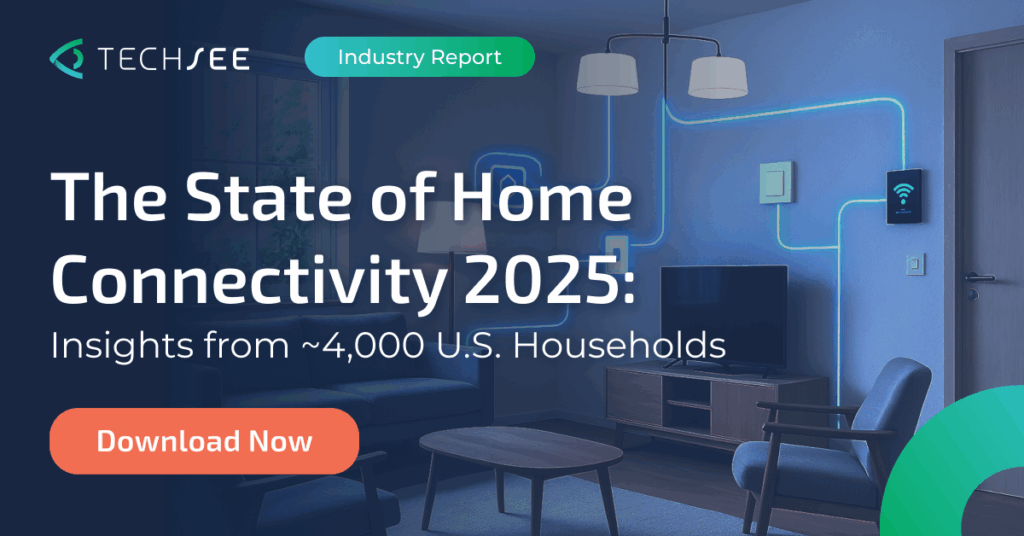Contents
- The Hidden Cost of Connectivity Pains: What the Survey Reveals About Broadband Customer Experience
- Connectivity Problems Are the Norm
- Where Connectivity Hurts the Most
- The Specific Pain Points
- Customers Try to Fix Problems Themselves
- Support Burden on ISPs
- Connectivity Pains and Telecom Retention
- Industry Data Confirms the Broadband Customer Experience Challenge
- What Customers Really Demand
- Turning Pain Into Opportunity
- Conclusion
- FAQs
The Hidden Cost of Connectivity Pains: What the Survey Reveals About Broadband Customer Experience
Broadband has become the invisible infrastructure of daily life. Families depend on it to work, learn, stream, game, and keep smart devices online. But behind the marketing promises of gigabit speeds and “whole-home Wi-Fi,” the reality is often slightly disappointing. According to TechSee’s 2025 Home Connectivity Survey of nearly 4,000 U.S. households, broadband connectivity issues are marked by daily frustrations that undermine both consumer trust and provider profitability.
The findings show just how widespread connectivity issues are, what pains they cause, and how they directly affect customer loyalty in the telecom industry. This article explores how broadband connectivity issues affect customers. It highlights the areas they hit hardest and shows how they influence customer loyalty and ISP support.
Connectivity Problems Are the Norm
Connectivity problems are now routine. For instance, 62% of households said they experienced Wi-Fi problems in the past 12 months. According to this Wi-Fi performance survey, nearly 2 in 5 report disruptions at least weekly. 18% experience them daily, and another 20% weekly.
Even households that purchased premium “whole-home Wi-Fi” packages are not immune. 72% of them still report ongoing issues. This gap between marketing claims and reality undermines trust and sets the stage for churn.
The survey also shows that households with 16 or more connected devices were significantly more likely to face problems (70%) compared with those with only 1–5 devices (58%).
Where Connectivity Hurts the Most
Problems do not strike randomly. They show up in the very rooms where households expect reliable service. 76% of households that reported issues said they experienced location-specific coverage gaps. Bedrooms (35%) and home offices (24%) were the top weak spots.
This is significant because these are the places where connectivity matters most: bedrooms with multiple smart devices and home offices, where even a minor drop can disrupt a video call. These findings show how connectivity pains disrupt wireless network performance.
The Specific Pain Points
TechSee highlights four recurring frustrations customers face most often:
- 55% report inconsistent speeds or connection drops
- 50% complain of slow speeds
- 31% deal with dead zones where Wi-Fi does not reach
- 25% see smart devices disconnect
These results reveal customer experience is not just about speed on paper, but about stability, reach, and predictability.
Customers Try to Fix Problems Themselves
Most of the respondents do not reach for support immediately. 51% said their instinct is to troubleshoot on their own. Common actions include restarting the router (80%), moving it (32%), or investing in mesh/extenders (27%).
Even with such efforts, success is limited. 62% of customers said they could fully resolve issues on their own, another 33% partially, and 5% typically needed outside help.
Surprisingly, younger users struggle more; 48% of 18–29-year-olds resolved issues completely on their own, while 71% of those aged 45–60 did. These numbers also reflect broader smart home setup problems among younger households trying to connect multiple devices.
Despite these efforts, 67% of households still ended up contacting their ISP, with 21% reaching out once, 35% contacting 2–3 times, 8% contacting 4–5 times, and 3% contacting 6 or more times.
Support Burden on ISPs
When self-service fails, households turn to their ISPs. Two-thirds of households contacted their ISP at least once in the past year. Nearly 39% had a technician dispatched, yet 20% of those visits did not fully resolve the issue.
In fact, only 31% said their issue was fixed after the first technician visit, while 8% reported that the problem persisted even after professional support.
Each failed visit costs providers not only in direct truck roll expense but also in lower ISP customer satisfaction, which fuels dissatisfaction and churn. Offering visual assistance, ISP support tools can help reduce failed visits and improve resolution rates.
Connectivity Pains and Telecom Retention
The connection between poor broadband customer experience and loyalty is clear. 51% of consumers said they would switch providers if issues were not resolved quickly. 48% would switch to a competitor offering better whole-home coverage, and 34% said they would even pay up to 10% more for reliable service.
These numbers challenge what many providers assume: that price is the primary lever for loyalty. This survey shows reliability now matters more than price, and customers are willing to reward providers who deliver it.
Industry Data Confirms the Broadband Customer Experience Challenge
The challenges revealed in our survey align with broader industry trends. Parks Associates reported that the average U.S. internet household had 17 connected devices in 2023, heightening the expectations for stable Wi-Fi everywhere.
Also, more than 52% of DIY smart home users said they ran into setup or connectivity issues, adding another layer to how consumers’ expectations are failing to meet reality even outside broadband service. These external stats reinforce that the demands on home networks are increasing and that connectivity pains are becoming more visible as homes become more connected.
What Customers Really Demand
The survey points to a fundamental truth: speed is not enough. The broadband customer experience depends on reliability, transparency, and empowerment. Customers expect providers to anticipate problems, explain coverage gaps at installation, and offer tools that help resolve issues before frustration grows.
Households want clarity from the start and solutions that don’t require waiting for support. Providers that continue to focus only on raw speeds or marketing promises risk losing trust. What matters now is service, visibility, and follow-through.
Turning Pain Into Opportunity
There is cause for optimism because customers are open to better service. 73% said they would trust their ISP more if it proactively helped them fix Wi-Fi issues. 66% said they would use a Wi-Fi mapping app to visualize coverage, and 69% said step-by-step visual guidance would help them avoid calling support.
Visual assistance and AI diagnostics are no longer fancy add-ons. They represent a way to empower customers, reduce support costs, and rebuild trust.
Conclusion
The survey of nearly 4,000 households makes one thing clear. Connectivity pains are still the rule, not the exception. With 68% reporting Wi-Fi problems, 76% facing coverage gaps, and half willing to switch providers if issues are not resolved, providers cannot ignore the customer experience gap.
And with more than 56% of households open to purchasing additional equipment if shown clear evidence of gaps, there is also a clear upsell opportunity for providers who are transparent and proactive.
For ISPs, speed and price matter, but they are not enough. Loyalty will come from great customer service that is reliable, proactive, and transparent. Providers who deliver on those will reduce churn, cut costs, and build stronger customer relationships.
Download the full TechSee Home Connectivity Survey report to explore the complete dataset and discover how to transform broadband customer experience into a competitive advantage.
FAQs
Below are some common questions based on the survey findings and what consumers often want to know.
Q1: How many devices does the average U.S. home have connected?
Parks Associates found that the average U.S. household with internet access had 17 connected devices in 2023. This includes everything from smart TVs to security systems to smart watches.
Q2: Do many people have trouble setting up smart home devices?
Yes. 52% of DIY smart home users report setup or connectivity issues, according to recent research from Parks Associates.
Q3: What kind of Wi-Fi issues are most common?
TechSee’s survey found several common problems.
- Inconsistent speeds or internet connections dropping affect 55% of users.
- Slow speeds are an issue for 50%.
- Dead zones impact 31%.
- Smart device disconnections occur for 25%.
Q4: How often do people experience Wi-Fi problems?
In the survey, 18% of households reported daily disruptions, 20% weekly, and overall 68% experienced some issue in the past 12 months.
Q5: What do customers try before calling their ISP for help?
More than half (51%) try to fix issues themselves, restarting routers (80%), repositioning them (32%), or upgrading equipment with extenders or mesh (27%) but only 62% fully resolve the issues on their own.







